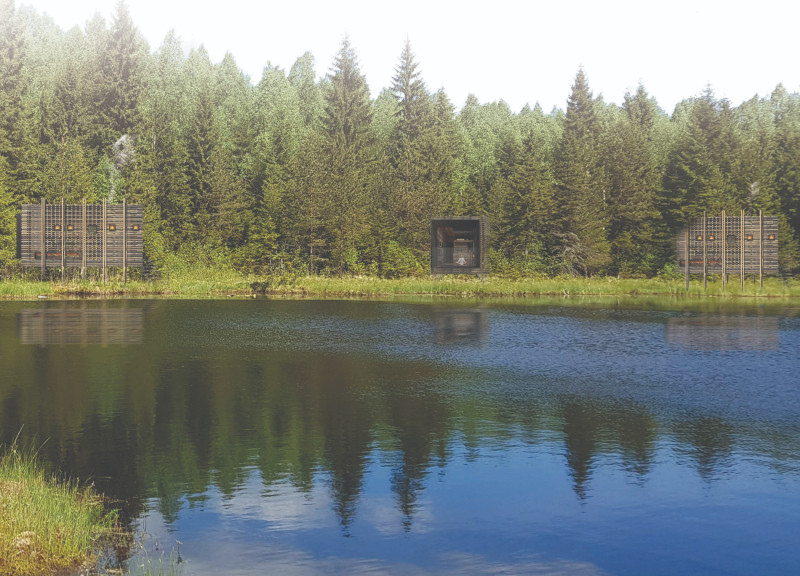5 key facts about this project
The design serves multiple functions, combining living, social, and contemplative spaces within a cohesive layout. Key areas include communal gathering spots, personal meditation spaces, and practical utility zones such as a tea preparation area and waste management systems. This multifunctionality allows the inhabitants to engage meaningfully with the environment while also addressing practical living needs.
The project features a variety of distinct elements that contribute to its uniqueness. One of the primary design approaches is the use of a permeable shell constructed from perforated wooden screens. These allow for natural airflow and an unobstructed view of the surrounding forest, enhancing the immersive experience. Additionally, large expanses of glass walls create transparency and serve as a constant reminder of the connection between the interior and the exterior landscape.
Unique to this project is the adaptive nature of its design. Pivoting wooden panels allow inhabitants to manipulate light, privacy, and airflow, thus tailoring their living experience to daily needs and seasonal changes. This attentiveness to functionality within a natural context distinguishes "Cocoon" from conventional residential designs.
In terms of sustainability, the project incorporates efficient water management systems, utilizing clean and wastewater tanks to minimize environmental impact. This commitment to ecological responsibility is complemented by a carefully selected material palette that includes wood, glass, steel, and natural clay, ensuring the structure is both aesthetically pleasing and energy-efficient.
The architectural plans reveal a thoughtful layout that promotes seamless movement throughout the space, and the various architectural sections provide insight into the relationship between different zones within the design. For a comprehensive understanding of the innovative architectural ideas and design methods employed in the "Cocoon" project, exploring architectural plans and sections is highly recommended. Understanding these elements will offer deeper insights into the effective integration of the structure within its natural setting.


























